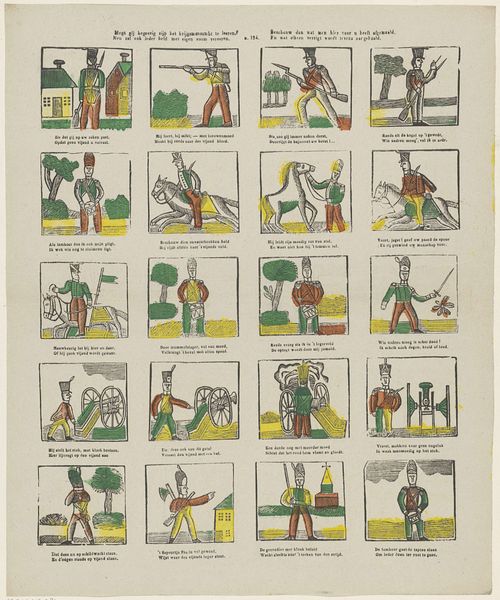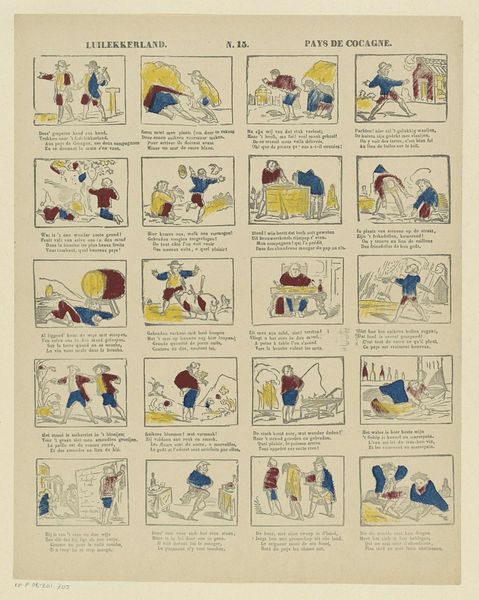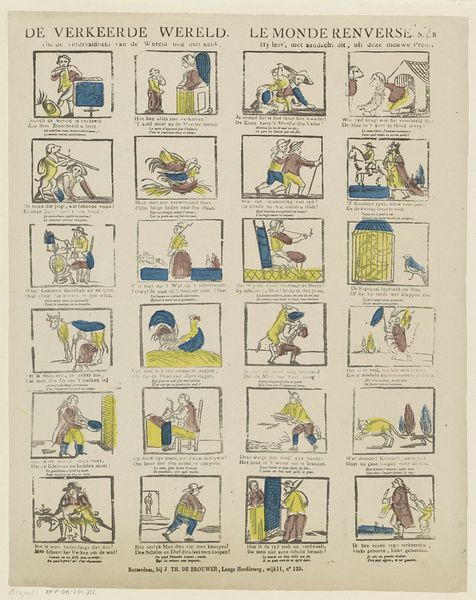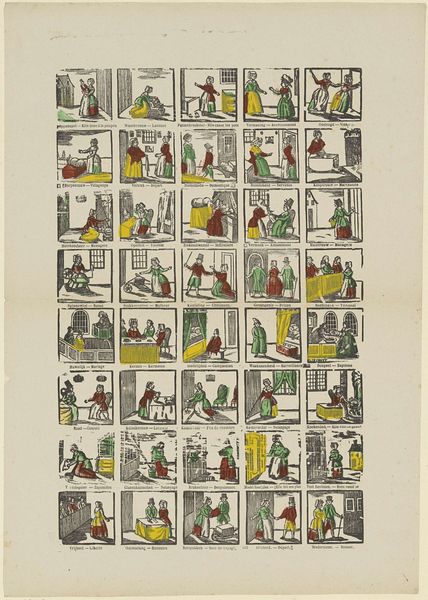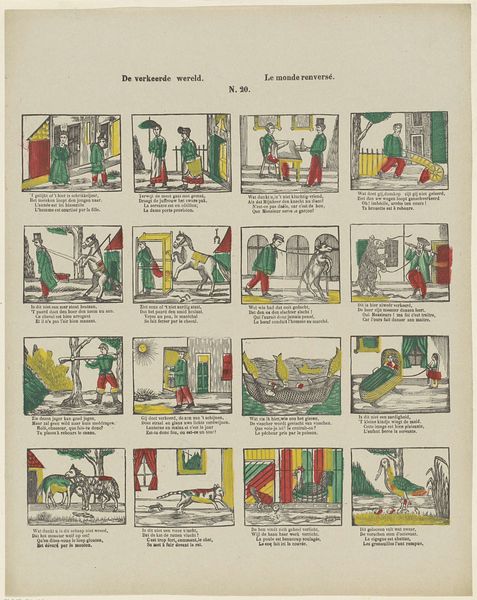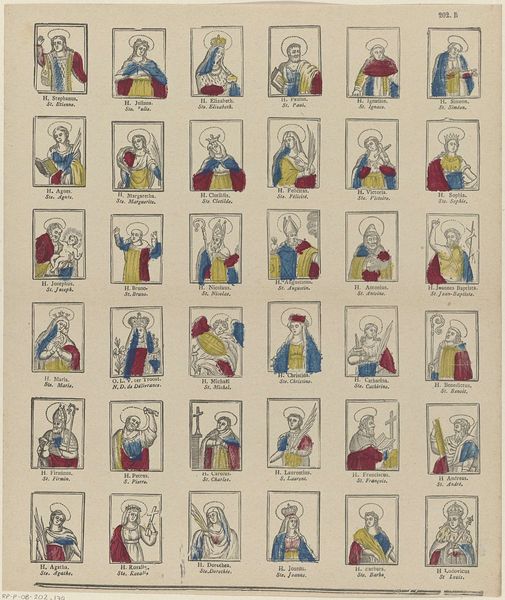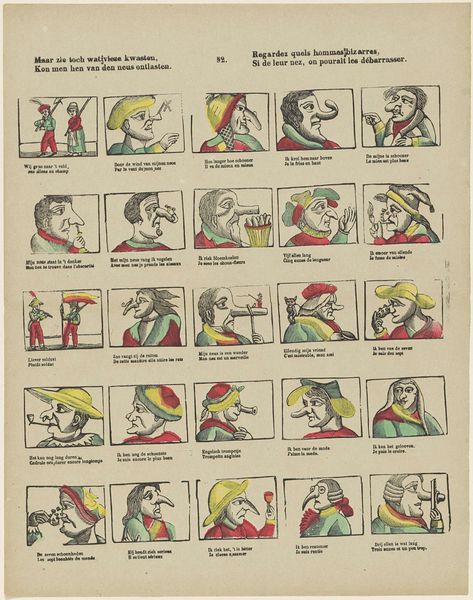
Nieuw letterspel voor kinderen / Nouveau jeu d'alphabet pour les enfants 1800 - 1833
0:00
0:00
lithograph, print, paper
#
dutch-golden-age
#
lithograph
# print
#
paper
#
genre-painting
Dimensions: height 381 mm, width 314 mm
Copyright: Rijks Museum: Open Domain
This alphabet game for children was produced by Philippus Jacobus Brepols, a printer active in the late 18th and early 19th centuries. It’s more than just a tool for learning letters; it's a reflection of its time. Each card pairs a letter with an animal, its name printed in both Dutch and French, mirroring the societal emphasis on multilingualism, and revealing the cultural interplay in the region. The colors—red, yellow, and blue—aren't just decorative; they speak to the values of simplicity and order, aligning with pedagogical beliefs about how children learn. However, the image of "Jokko” for the letter "I," accompanied by the French "Jocco," is jarring. It shows a racial stereotype which reflects the troubling legacy of colonialism embedded even in children's educational materials. This alphabet isn’t just about language; it's a cultural artifact, revealing how knowledge and power were intertwined, subtly shaping young minds within a complex social order. By exploring these historical educational tools, we can better understand how culture and identity are shaped from an early age.
Comments
No comments
Be the first to comment and join the conversation on the ultimate creative platform.

